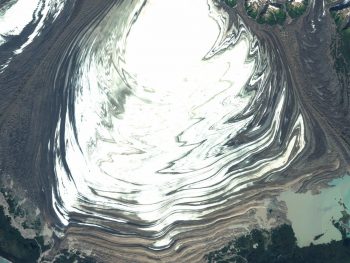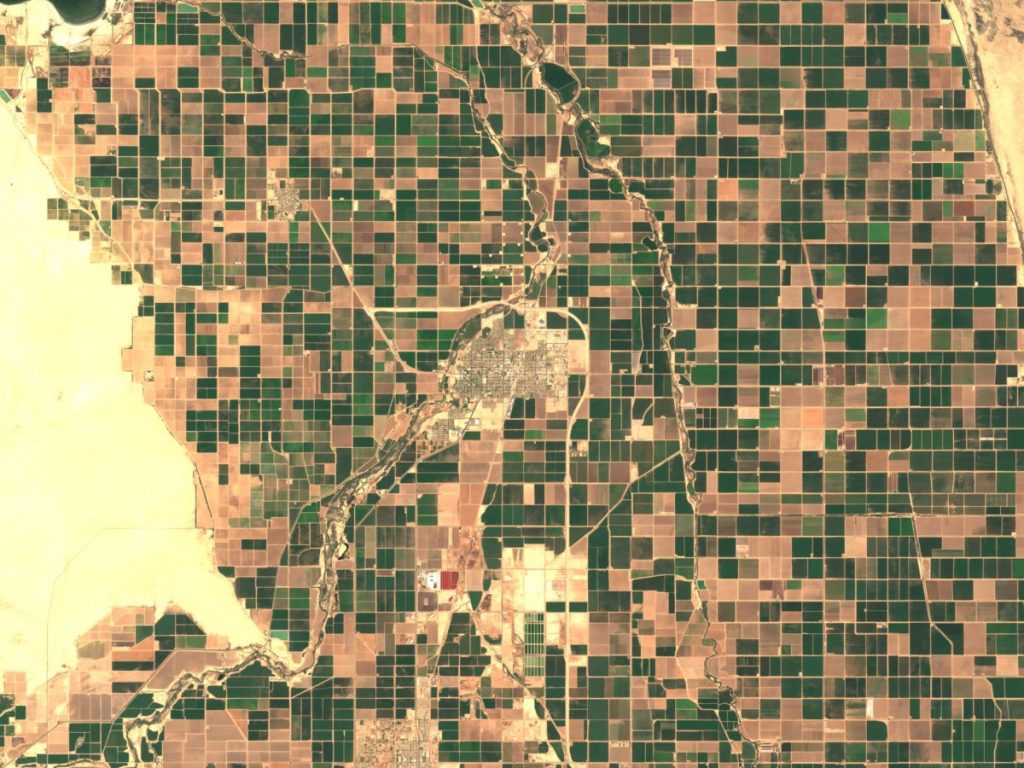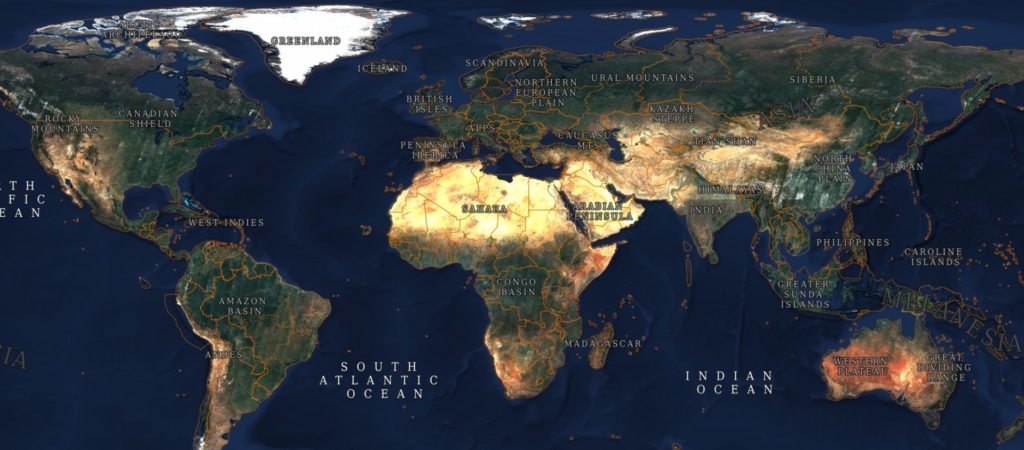Guest blog post by Joachim Ungar, EOX IT Services, Austria

Alaska, USA, as shown on s2maps.eu – Credit: Sentinel-2 cloudless by EOX, CC BY 4.0 (contains modified Copernicus Sentinel data 2016 & 2017)
Our civilisation gathers more and more data about our planet and it gets increasingly challenging to make use of this huge amount of data. This results in scientists rather extracting and processing data on powerful servers than on their desktop PCs as they used to do since the 90s. EOX builds such server tools and web clients to facilitate the scientists’ work. It is an Austrian company dedicated to make Earth Observation data more accessible while developing and contributing to various Open Source Software projects.
One of the products EOX is building are background maps which are specifically designed to put data into their geographical context. These maps are free to use and available through standardised endpoints for geographic software.

Brawley, California, USA, as shown on s2maps.eu – Credit: Sentinel-2 cloudless by EOX, CC BY 4.0 (contains modified Copernicus Sentinel data 2016 & 2017)
When ESA launched the first of the two Copernicus Sentinel-2 satellites on behalf of the European Commission, it became the world’s best open dataset (from all datasets generating RGB images) in terms of spatial (10m) and temporal (<10 days) resolution. This spawned various projects from different companies and organisations to build tools on top of or generate products from this data.
The target of EOX was to create the first cloud- and seamless mosaic from this new dataset to be used as an additional background layer for its maps service. The project also helped to explore how to approach processing huge amounts of data using cloud computing and demonstrates EOX’ capabilities to handle such tasks. The Sentinel-2 cloudless project s2maps.eu not only builds exclusively on, but also contributes to various open source projects.

s2maps.eu – a cloudless Sentinel-2 map of Earth. Credit: Sentinel-2 cloudless by EOX, CC BY 4.0 (contains modified Copernicus Sentinel data 2016 & 2017)
The decision to make the results available to the general public under the very permissive Creative Commons Attribution 4.0 International License was therefore an easy one.
Open data and open source software have positive impacts on various parts of society:
- First, it helps educating students in the respective fields as they can train their skills on real data with real, widely used tools without having to pay for both;
- Second, it makes science more transparent as everybody can test and verify (or falsify) results when both data and software are openly available;
- Third, it enables many smaller companies to build products and services on top of open data using open source software without huge entry costs;
- Fourth, citizen scientists have access to both data and tools which also helps keeping the general public informed and included in important decisions.
The European Commission’s Copernicus programme in collaboration with ESA therefore helps improving various aspects of our lives by making this data open.
Joachim Ungar is Lead Cartographer at EOX.

Discussion: no comments